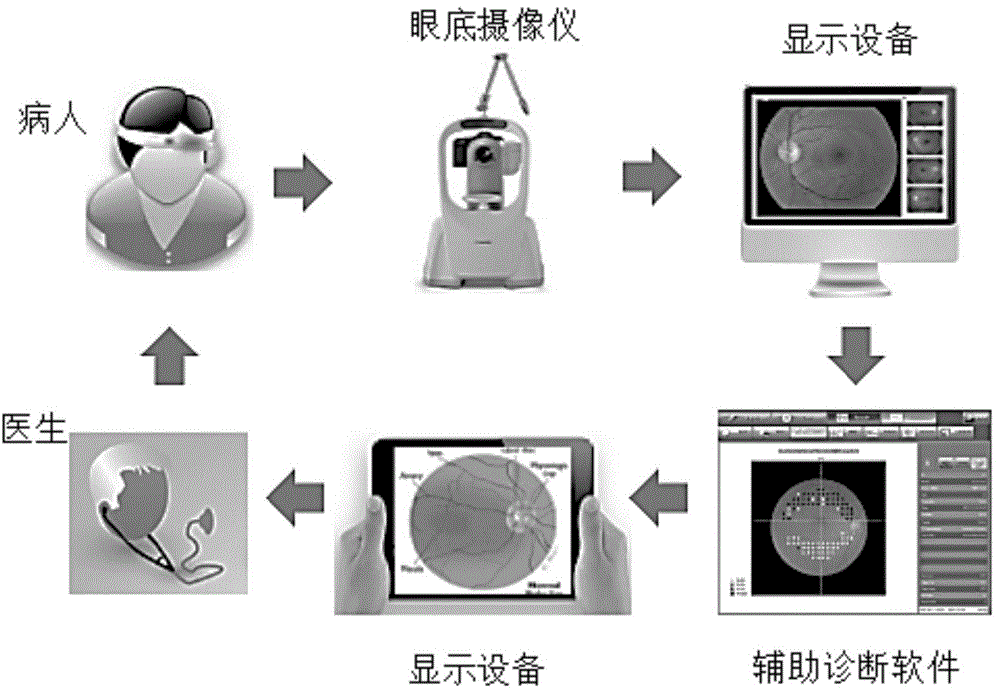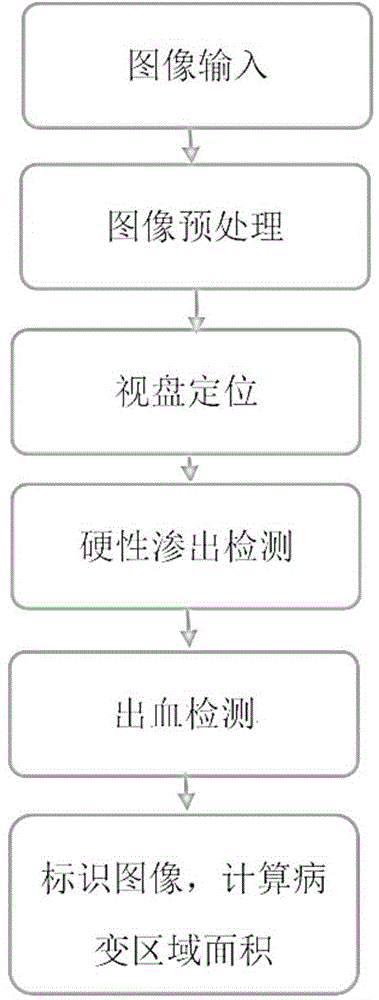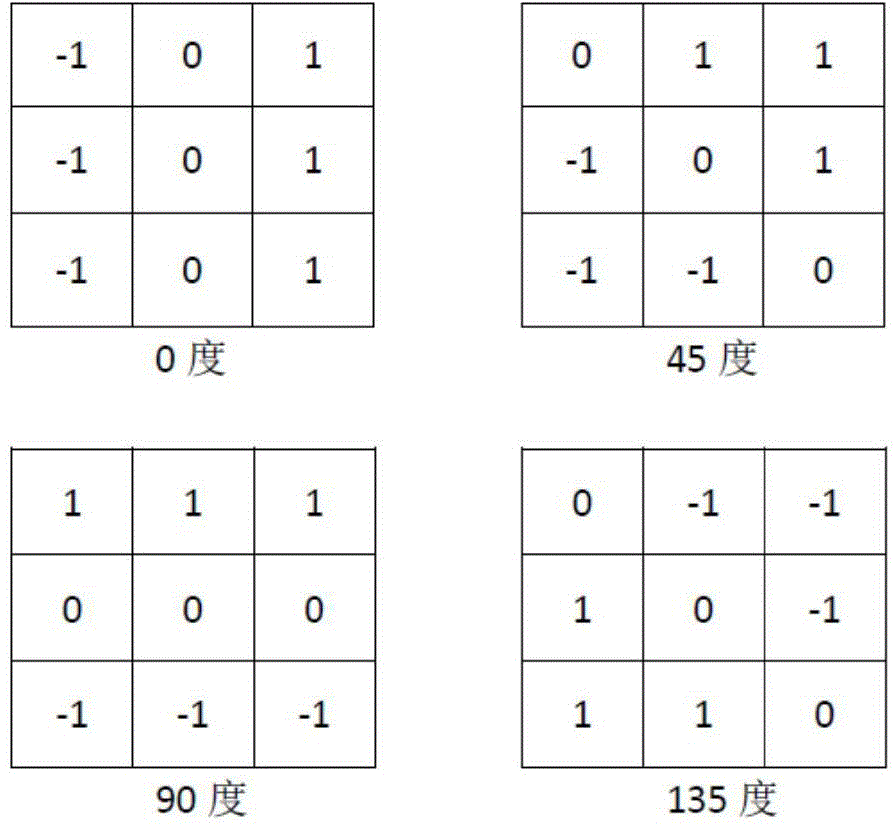Morphological segmentation-based eye fundus image lesion detection method
A technology based on morphology and fundus images, applied in the field of image processing, can solve the problems of unsatisfactory detection of hemorrhage area, speed up detection speed, and large amount of calculation, and achieve the effect of improving real-time operation, speeding up detection speed, and avoiding interference.
- Summary
- Abstract
- Description
- Claims
- Application Information
AI Technical Summary
Problems solved by technology
Method used
Image
Examples
Embodiment 1
[0033] Such as figure 1 As shown, this embodiment includes the following steps:
[0034] The first step is to input the fundus image to be detected and perform preprocessing, specifically:
[0035] 1.1) Use the brightness component of HSV space to achieve brightness balance: first convert the fundus image into HSV space, and perform the following operations on the V component: where: X V Represents the V component of the pixel, X’ V Indicates the V component value of the updated pixel point; then X' V Return the RGB space of the pixel, that is, the brightness equalization is completed.
[0036] 1.2) Contrast enhancement is achieved by Constrained Contrast Adaptive Histogram Equalization (CLAHE);
[0037] This operation not only satisfies the effect of adaptive histogram equalization to redistribute the brightness through the local histogram to achieve the effect of contrast enhancement, but also overcomes the problem of excessive amplification of noise caused by ordinary...
PUM
 Login to View More
Login to View More Abstract
Description
Claims
Application Information
 Login to View More
Login to View More - R&D
- Intellectual Property
- Life Sciences
- Materials
- Tech Scout
- Unparalleled Data Quality
- Higher Quality Content
- 60% Fewer Hallucinations
Browse by: Latest US Patents, China's latest patents, Technical Efficacy Thesaurus, Application Domain, Technology Topic, Popular Technical Reports.
© 2025 PatSnap. All rights reserved.Legal|Privacy policy|Modern Slavery Act Transparency Statement|Sitemap|About US| Contact US: help@patsnap.com



